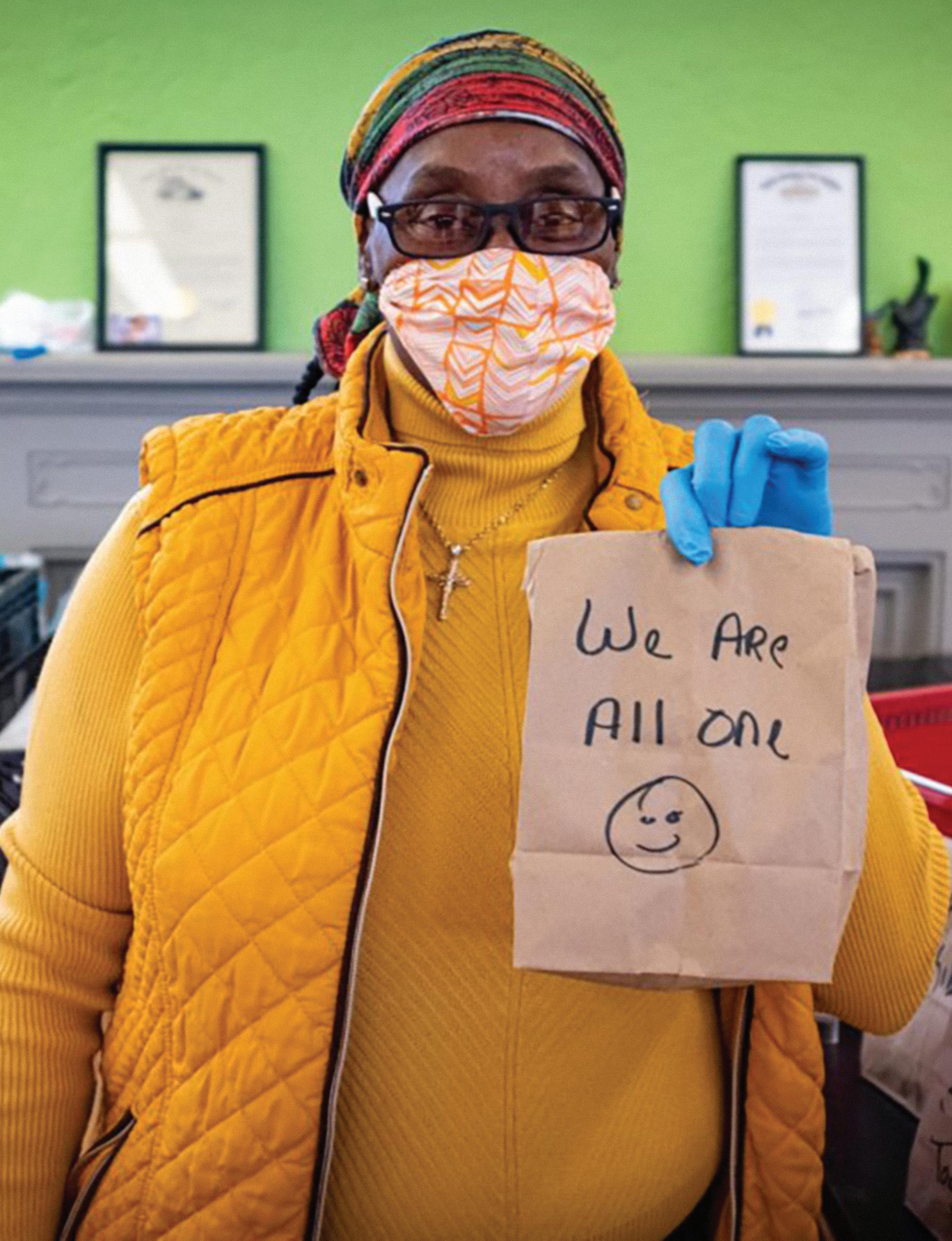
2 minute read
On the Front Lines
Nonprofits rise to challenge of battling COVID-19
Photo courtesy of Clintonville-Beechwold Community Resources Center
While central Ohio nonprofits are accustomed to changing course and responding to evolving community needs, no one was prepared for what 2020 had in store. As COVID-19 loomed, like a storm in the distance, nonprofit leaders braced for the unknown.
When the storm arrived, it left no one untouched. From the arts to the zoo, every organization had to take inventory of their needs and capabilities, which included confronting the need for many unanticipated expenses.
While some organizations were less impacted by the immediate threat, others were gearing up for a possible breakdown in the local healthcare system. Personal protective equipment (PPE), i.e. the masks, gloves, and gowns that help keep our healthcare workers safe, were in short supply. Others that work with the community’s most vulnerable residents suddenly could not safely get to them, or host them for food, shelter, and other vital services.
Every organization was affected in some way. It was, in a word that became synonymous with this time, unprecedented.
But, as the reality of the situation came into focus, Columbus did what it does best—it rallied together. Shelter systems teamed up to establish real-time solutions. Those providing food to seniors re-shaped distribution to ensure safe delivery of meals. Mental health counselors, a beacon of hope for those struggling with mental illness or addiction issues, found new ways to reach their patients through telehealth services.

To help address the needs of its residents, Homeport held monthly produce distributions at two of its communities, Pheasant Run and Marsh Run. Produce was available for anyone living in a Homeport community, as well as the community at large.
Photo courtesy of Homeport
“The sector has always been highly collaborative, but COVID-19 really brought solutions-oriented, problem-solving efforts to the forefront,” said Dan Sharpe, Vice President for Community Research and Grants Management at the Foundation. “Innovative collaborations have been put in place to reduce and remove barriers to better serve those in need.”
As the number of COVID-19 cases grew, and life came to a near standstill for most, there was an unmistakable surge in need for many nonprofits. In addition to helping others, organizations had to take into account their own viability as planned fundraising events and social enterprise businesses were halted.
“Organizations saw a double digit increase from those requesting, and in need of, services, with a large proportion of persons seeking help for the first time,” explained Sharpe. “Furloughed and laid off individuals, and those who were already on the margins, experienced increased uncertainty amid COVID-19. They also faced new barriers to receiving services from reduced public transit availability, closed childcare facilities, or lack of access to technology to take advantage of many programs that switched to digital platforms.”
Funds like the Foundation’s Emergency Response Fund (ERF) were critical to nonprofits’ early response, as well as the ongoing efforts to support those they serve. More than 140 grants were awarded from the ERF between March and the end of July. Those grants served as a lifeline for organizations of all sizes as they addressed changing needs in our community and their clients’ lives.
Through extraordinary support from Columbus Foundation donors, nonprofits continue to rise to this historic occasion, fulfilling critical missions that strengthen our community. This support and kindness offers nonprofits an important ingredient of making it through this crisis—hope.





